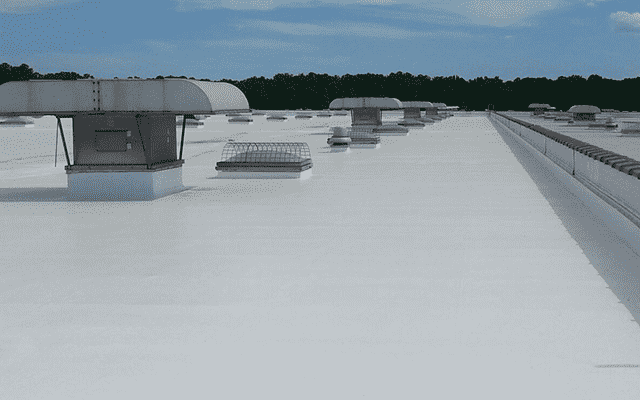Commercial roofing is constantly exposed to harsh elements and often bears the load of HVAC or other equipment, so it’s only a matter of time until some portion of the roof fails. Roof leaks can be catastrophic and very expensive to fix, especially if the issue goes unnoticed for an extended period of time. Even worse, the equipment you house inside your building can become damaged even from small leaks.
The ability to predict and correct roof weakness early is critical in minimizing the damage of a leak. Below, we’re going over the positive and negative aspects of flood testing and voltage testing so you can decide which is right for your commercial property.
First, How Are They Done?
Flood testing involves flooding your building’s roof with larger quantities of water than you would see naturally. The interior of the property is then carefully inspected while the roof is “under load” for any signs of leaking and the water level is measured to see if any loss occurred.
Voltage testing involves using an electric current to attempt to complete a circuit between the top layer of the roof and the conductive deck underneath the roof’s waterproof membrane. The results are used to pinpoint breaches or significantly “thin” areas where the leak(s) is already occurring.
Issues with Flood Testing
There are several downsides to flood testing, the 2 most important of which is that the source of the leak isn’t pinpointed and water is being pushed into the roofing system causing unnecessary damage that will need to be repaired. When water finds its way in through your roof membrane, it will begin slowly soaking the insulation inside. The inspector in your building will be able to see signs of leaking – possibly puddles on the floor or wet spots on the ceiling – but this still doesn’t show the exact origin of the leak.
Next, flood testing is rather expensive, as it involves high-capacity water pumps and large volumes of water to flood your roof.
Lastly, flood testing can actually do damage to your roof. Your commercial building was designed to withstand a certain amount of weight, and flooding your roof can surpass that limit and cause flooding to get worse or your building to become damaged.
Benefits of High/Low Voltage Testing
Voltage testing, on the other hand, has quite a few benefits that flood testing doesn’t offer. First, it’s highly reliable. Using a small, electrically charged brush, the inspector can pinpoint the exact locations on your roof that are leaking or might soon leak. This will allow you to repair a more localized area.
Because low voltage testing requires only a thin layer of water on top of your roof and high voltage requires none, there’s no danger involved with over-burdening your roof and potentially causing damage.
Voltage testing is also significantly less expensive, both for the testing and any repairs that may be needed. It requires far less water than flood testing (just enough to lightly moisten the membrane), and it allows you to repair only the specific areas that might be damaged, right on the spot.
Limitations of Voltage Testing
As with any testing, there are limitations to both high and low voltage testing.
High voltage testing requires your roof membrane to be dry, so testing will depend on the weather in your area.
Low voltage testing is limited as well. It can be challenging in some instances to use for testing vertical flashings, which may be a challenge to keep wet.
Vertical testing will typically be performed utilizing the HV method just prior to wetting the test area for the LV method.
Many owners of commercial properties are taking advantage of the benefits of voltage testing over flood testing, especially when considering the damage that flood testing can cause. When you’re ready to get your commercial building roof tested, contact one of our highly-trained voltage testing professionals to carry out safe and effective voltage testing.

